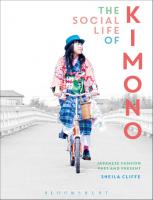Challenging Past and Present: The Metamorphosis of Nineteenth-Century Japanese Art 9780824840594
The complex and coherent development of Japanese art during the course of the nineteenth century was inadvertently disru
186 19 4MB
English Pages 312 Year 2006
Table of contents :
Contents
Illustrations
Acknowledgments
Note on Transliteration
1. Introduction: A Historiographical Overview
Part One. “History” Reviewed and Visualized
2. Cultural Change in Nineteenth-Century Japan
3. History Painting in the Meiji Era: A Consideration of the Issues
4. Mori Ōgai’s Phantom Partner: The Development of a Public for Western-style Painting in Meiji Japan
Part Two. Resituating Yokohama
5. Innovational Adaptations: Contacts between Japanese and Western Artists in Yokohama, 1859–1899
6. Expectation and Authenticity in Meiji Tourist Photography
7. Gorgeous with Glitter and Gold: Miyagawa Kōzan and the Role of Satsuma Export Ware in the Early Meiji Ceramic Industry
Part Three. Reconfiguring Painting Traditions
8. In Quest of the Real: Portrayal and Photography in Japanese Painting Theory
9. Meiji Response to Bunjinga
10. The Image of Kannon as Compassionate Mother in Meiji Art and Culture
Part Four. Architecture and Expositions Intent and Implementation
11. Reassessing the Rokumeikan
12. Japanese Imperial Architecture: From Thomas Roger Smith to Itō Chūta
13. Japan “Abroad” at the Chicago Exposition, 1893
Contributors
Index
Contents
Illustrations
Acknowledgments
Note on Transliteration
1. Introduction: A Historiographical Overview
Part One. “History” Reviewed and Visualized
2. Cultural Change in Nineteenth-Century Japan
3. History Painting in the Meiji Era: A Consideration of the Issues
4. Mori Ōgai’s Phantom Partner: The Development of a Public for Western-style Painting in Meiji Japan
Part Two. Resituating Yokohama
5. Innovational Adaptations: Contacts between Japanese and Western Artists in Yokohama, 1859–1899
6. Expectation and Authenticity in Meiji Tourist Photography
7. Gorgeous with Glitter and Gold: Miyagawa Kōzan and the Role of Satsuma Export Ware in the Early Meiji Ceramic Industry
Part Three. Reconfiguring Painting Traditions
8. In Quest of the Real: Portrayal and Photography in Japanese Painting Theory
9. Meiji Response to Bunjinga
10. The Image of Kannon as Compassionate Mother in Meiji Art and Culture
Part Four. Architecture and Expositions Intent and Implementation
11. Reassessing the Rokumeikan
12. Japanese Imperial Architecture: From Thomas Roger Smith to Itō Chūta
13. Japan “Abroad” at the Chicago Exposition, 1893
Contributors
Index

- Author / Uploaded
- Ellen P. Conant (editor)




![The Perkiomen Region, Past and Present [1]](https://ebin.pub/img/200x200/the-perkiomen-region-past-and-present-1.jpg)
![The Perkiomen Region, Past and Present [3]](https://ebin.pub/img/200x200/the-perkiomen-region-past-and-present-3.jpg)
![The Perkiomen Region, Past and Present [2]](https://ebin.pub/img/200x200/the-perkiomen-region-past-and-present-2.jpg)


